Abstract
We determined whether the bacteriological quality of fabrics cleaned in a hospital laundry could be maintained at wash temperatures lower than 75 degrees C by the use of economically reasonable formulas and wash conditions. Three groups of bacteria were examined to determine bacteriological quality: aerobic, nonexacting chemoorganotrophs, staphylococci, and total coliforms. The distribution of bacteria on soiled fabric was patchy, with staphylococci and total coliforms ranging from less than 0.1 to greater than 4 X 10(3) CFU/cm2 and chemoorganotrophs ranging from less than 0.1 to greater than 5 X 10(5) CFU/cm2. The washing process routinely produced fabric containing less than 1 CFU/cm2. Low-temperature (47.8 to 60.0 degrees C) wash procedures eliminated all bacterial groups at least as effectively as did high-temperature procedures. The effectiveness of bacterial density reduction at low temperature was augmented by increased concentrations of bleach. Successful low-temperature washing such as that shown here may save both energy and money for hospitals.
Full text
PDF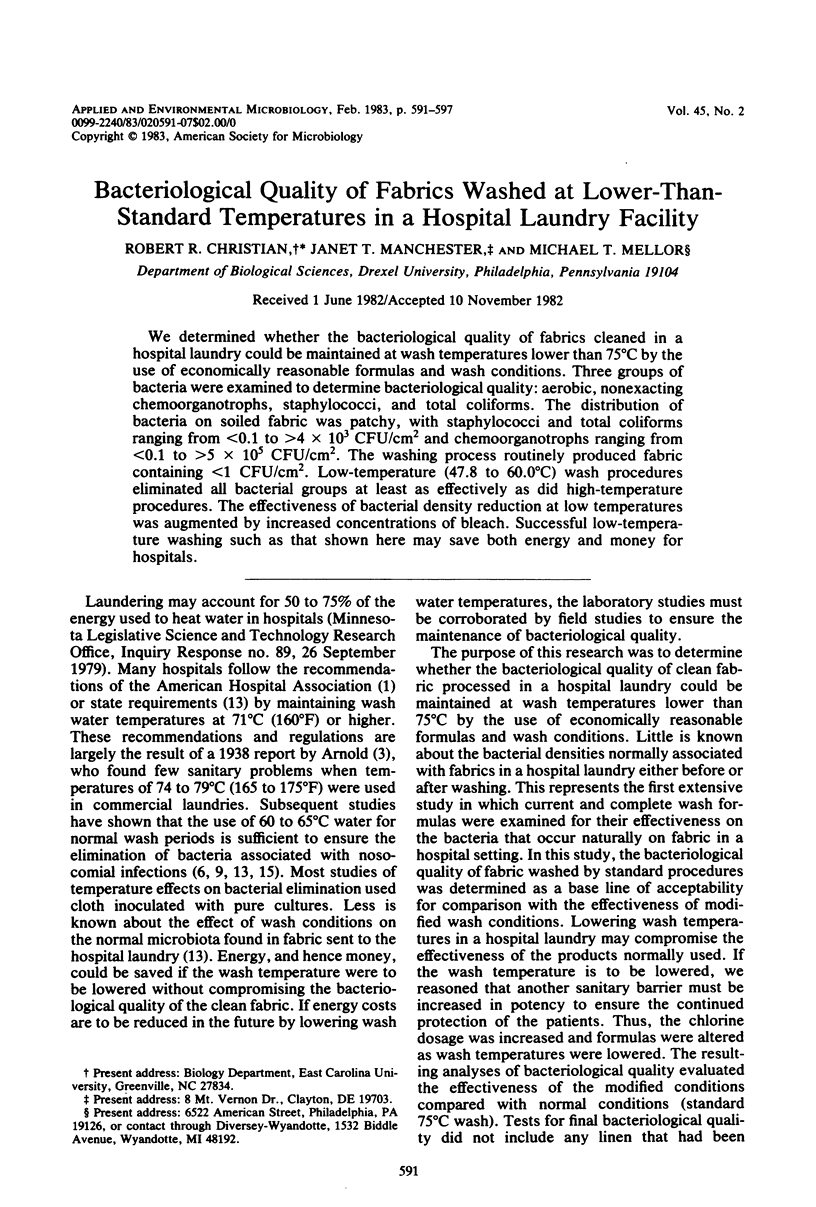
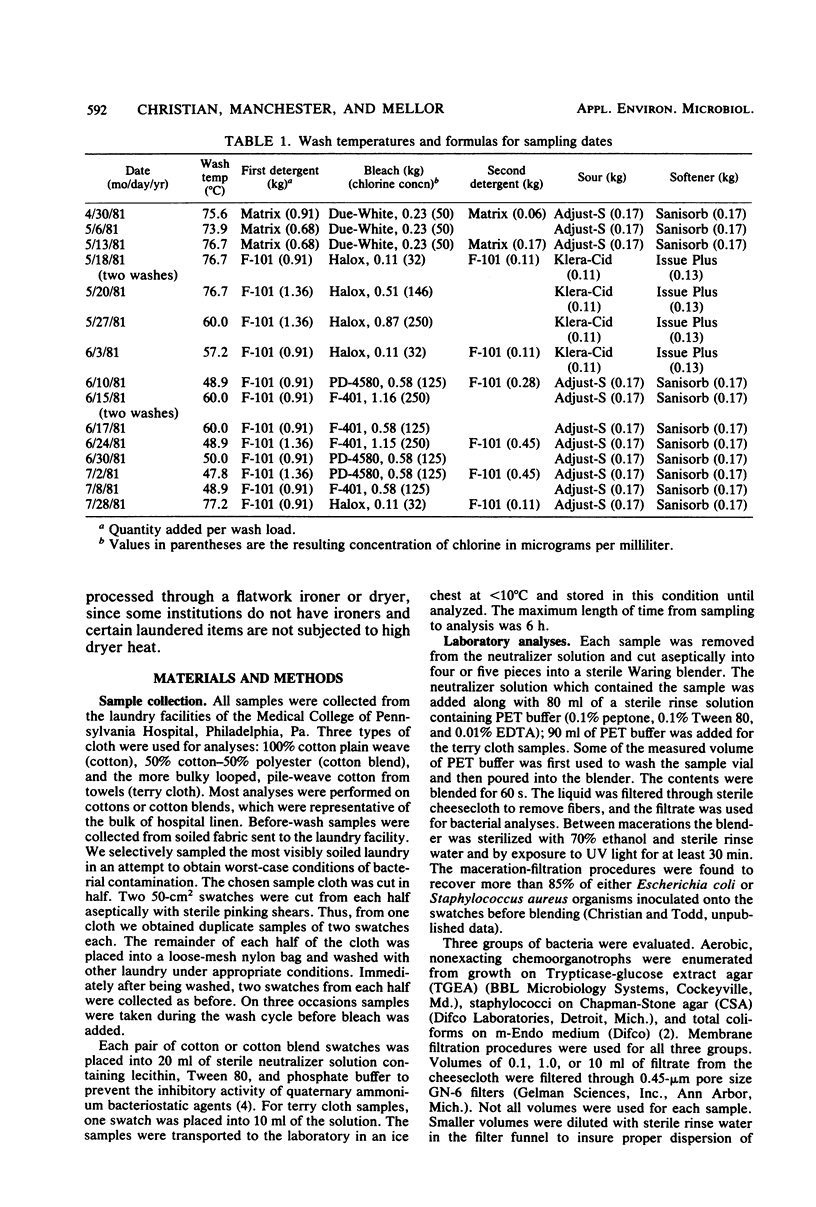
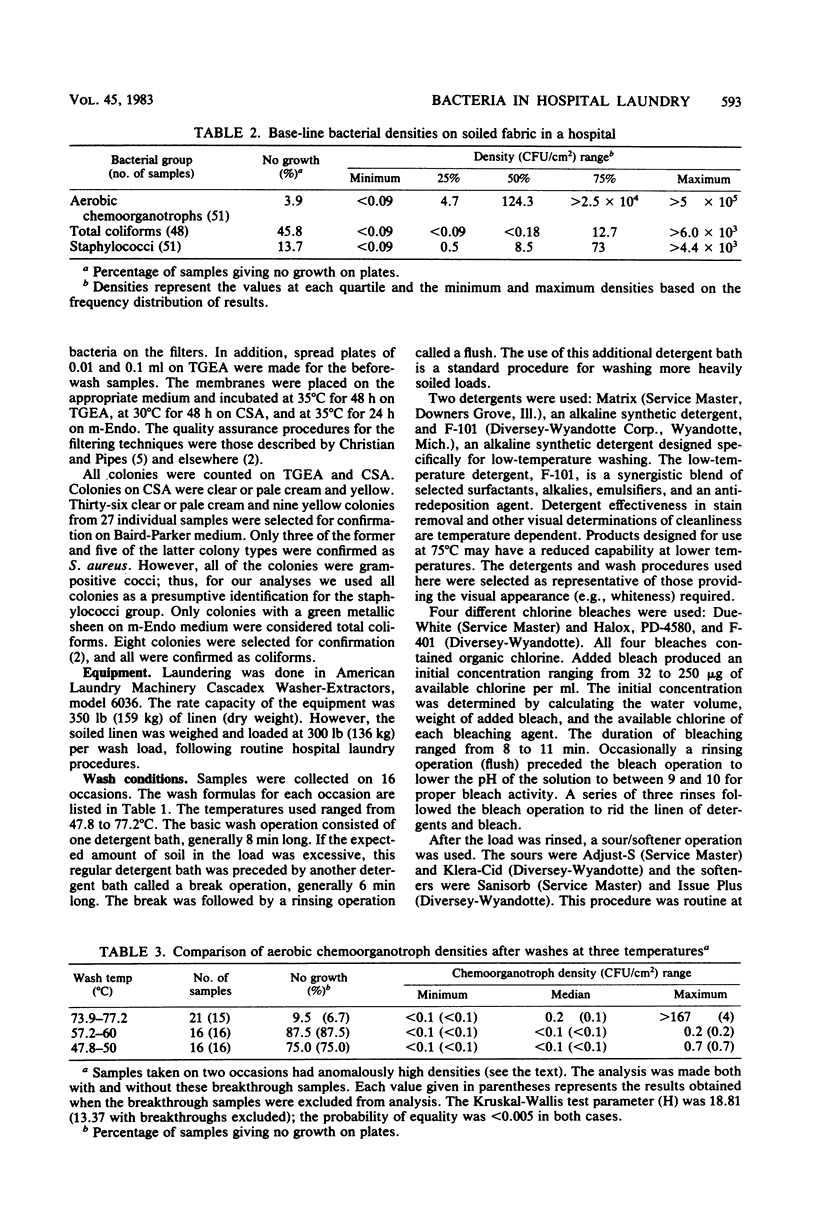
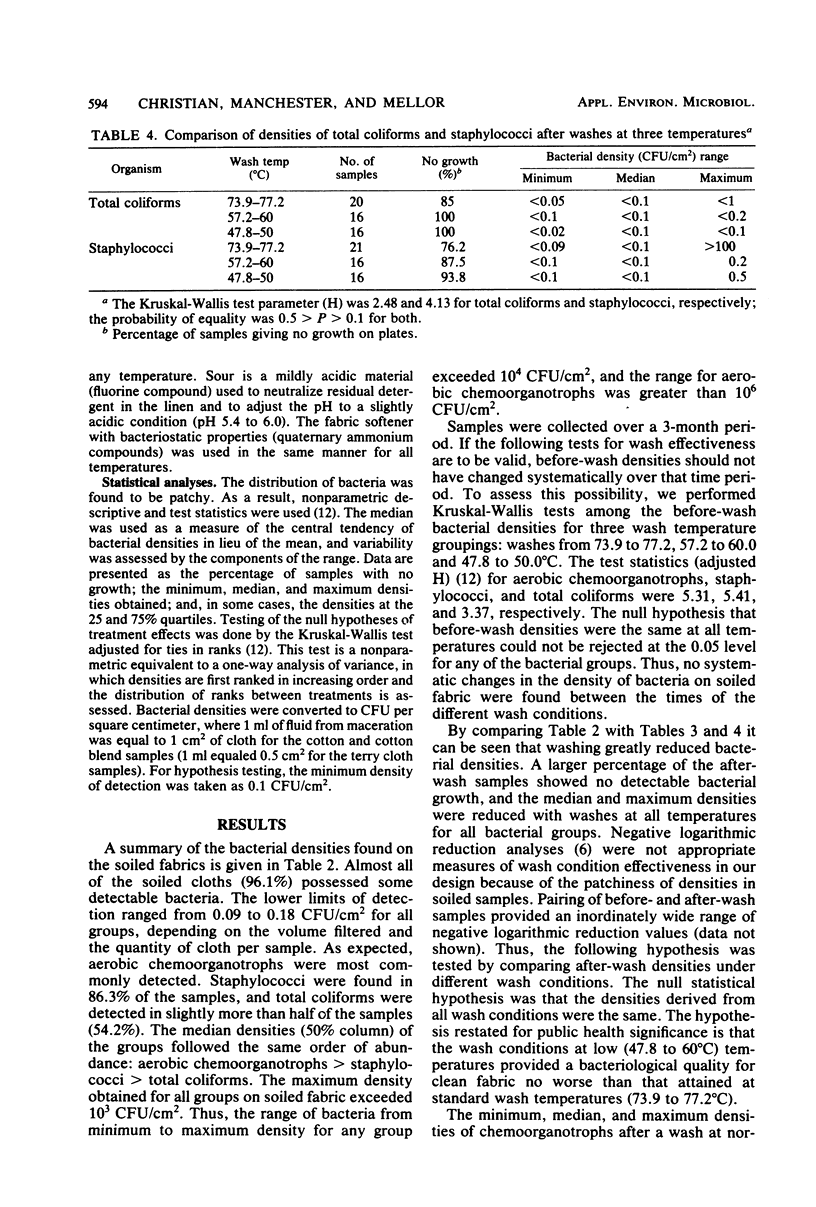
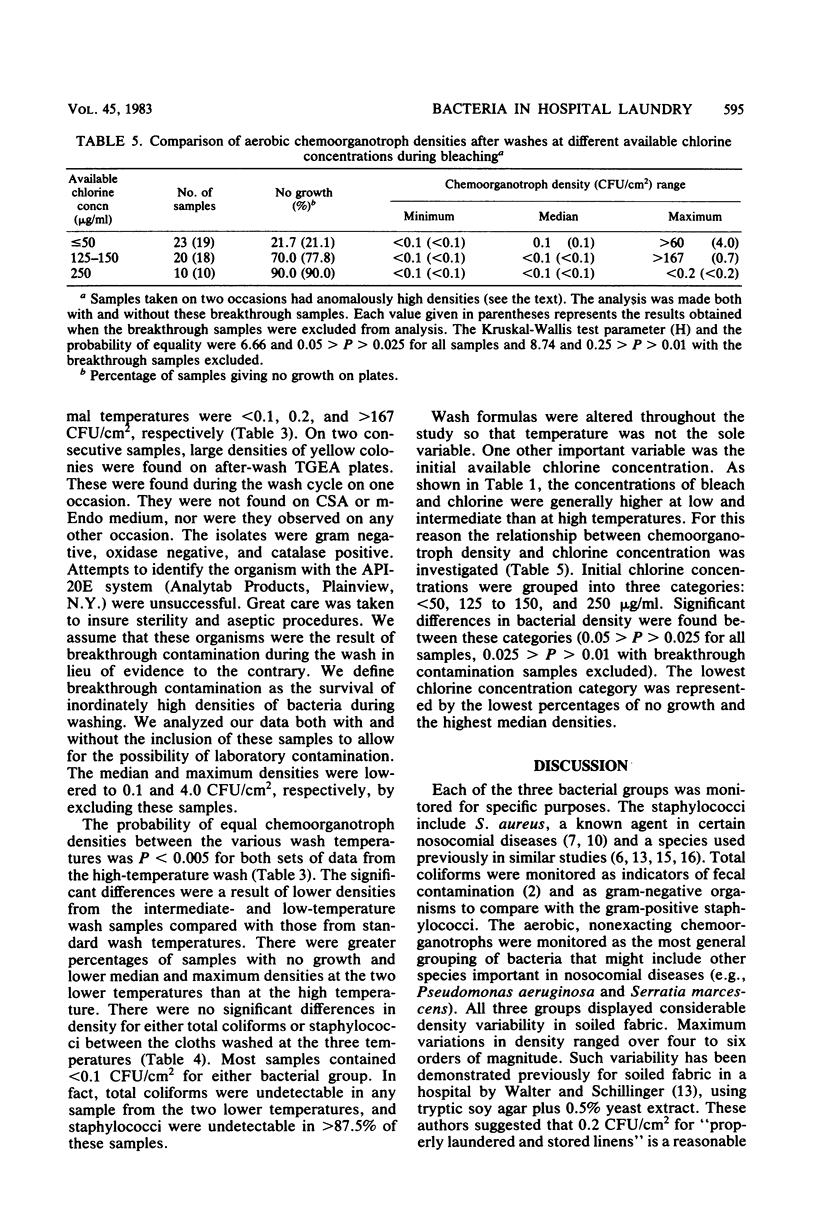
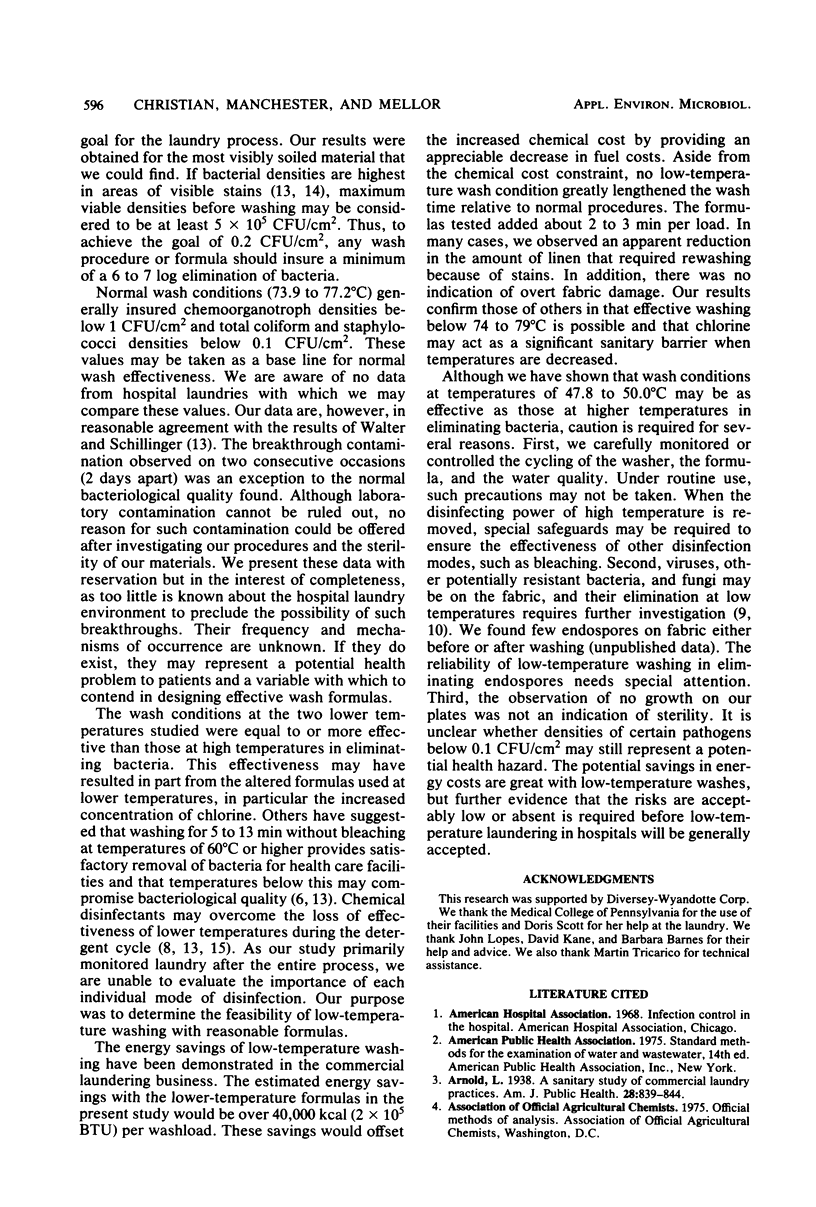
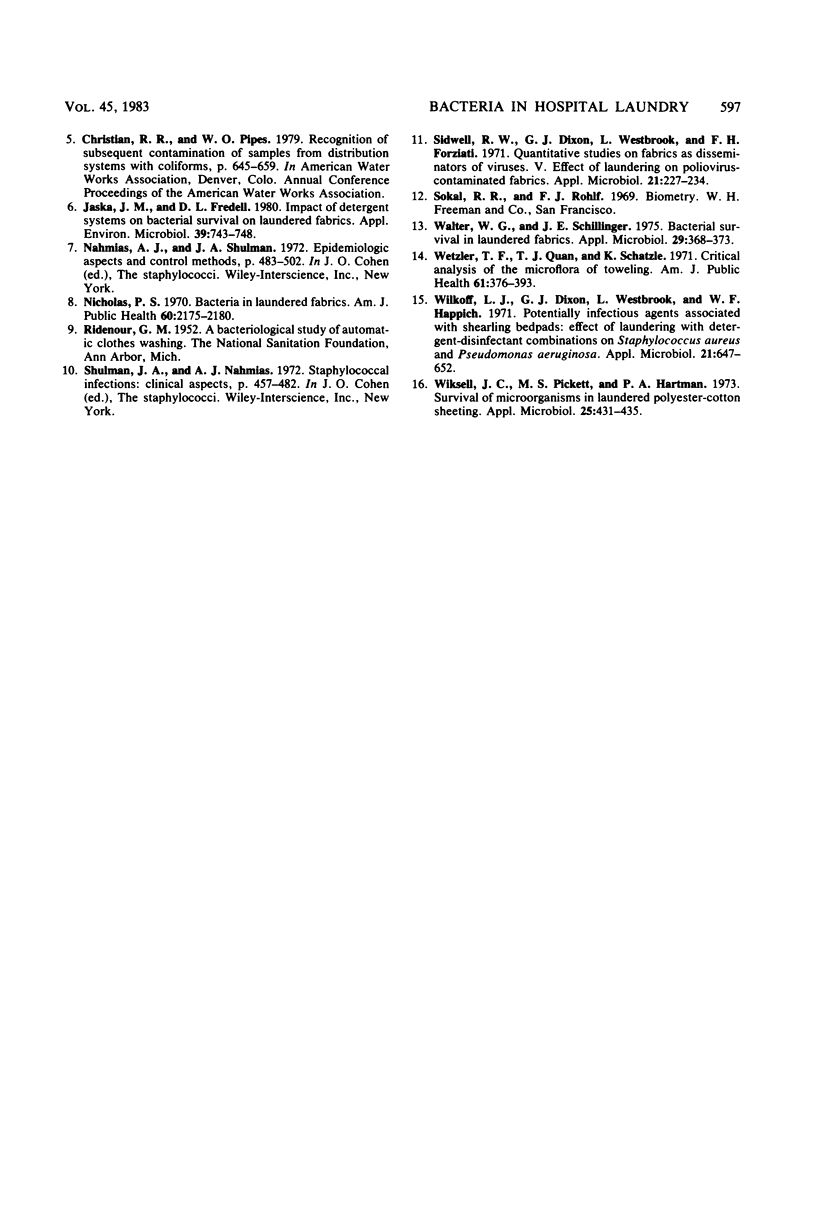
Selected References
These references are in PubMed. This may not be the complete list of references from this article.
- Arnold L. A Sanitary Study of Commercial Laundry Practices. Am J Public Health Nations Health. 1938 Jul;28(7):839–844. doi: 10.2105/ajph.28.7.839. [DOI] [PMC free article] [PubMed] [Google Scholar]
- Jaska J. M., Fredell D. L. Impact of detergent systems on bacterial survival on laundered fabrics. Appl Environ Microbiol. 1980 Apr;39(4):743–748. doi: 10.1128/aem.39.4.743-748.1980. [DOI] [PMC free article] [PubMed] [Google Scholar]
- Sidwell R. W., Dixon G. J., Westbrook L., Forziati F. H. Quantitative studies on fabrics as disseminators of viruses. V. Effect of laundering on poliovirus-contaminated fabrics. Appl Microbiol. 1971 Feb;21(2):227–234. doi: 10.1128/am.21.2.227-234.1971. [DOI] [PMC free article] [PubMed] [Google Scholar]
- Walter W. G., Schillinger J. E. Bacterial survival in laundered fabrics. Appl Microbiol. 1975 Mar;29(3):368–373. doi: 10.1128/am.29.3.368-373.1975. [DOI] [PMC free article] [PubMed] [Google Scholar]
- Wetzler T. F., Quan T. J., Schatzle K. Critical analysis of the microflora of toweling. Am J Public Health. 1971 Feb;61(2):376–393. doi: 10.2105/ajph.61.2.376. [DOI] [PMC free article] [PubMed] [Google Scholar]
- Wiksell J. C., Pickett M. S., Hartman P. A. Survival of microorganisms in laundered polyester-cotton sheeting. Appl Microbiol. 1973 Mar;25(3):431–435. doi: 10.1128/am.25.3.431-435.1973. [DOI] [PMC free article] [PubMed] [Google Scholar]
- Wilkoff L. J., Dixon G. J., Westbrook L., Happich W. F. Potentially infectious agents associated with shearling bedpads: effect of laundering with detergent-disinfectant combinations on Staphylococcus aureus and Pseudomonas aeruginosa. Appl Microbiol. 1971 Apr;21(4):647–652. doi: 10.1128/am.21.4.647-652.1971. [DOI] [PMC free article] [PubMed] [Google Scholar]


